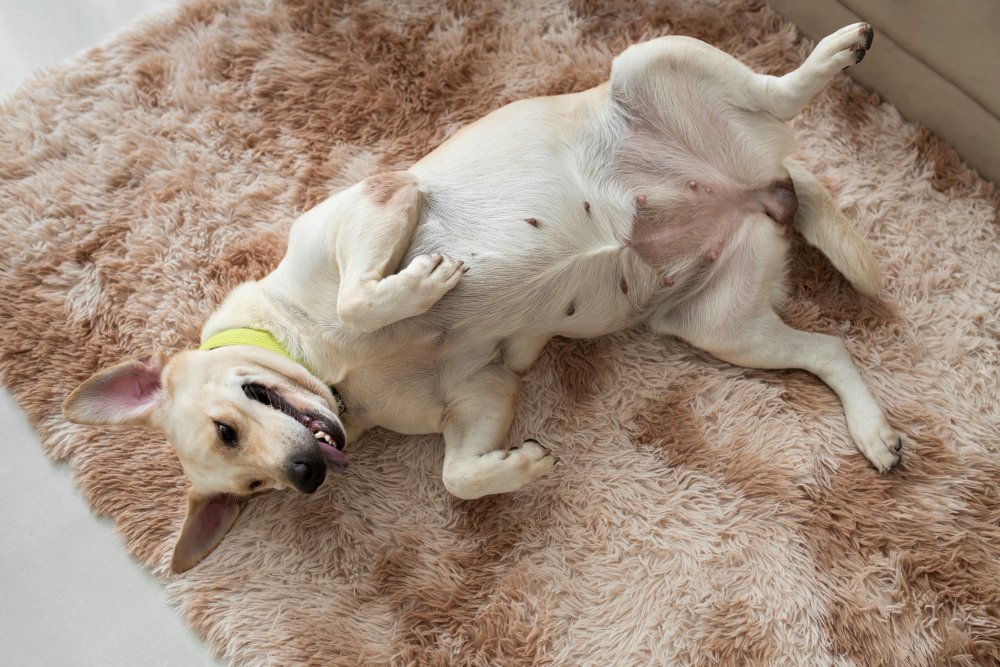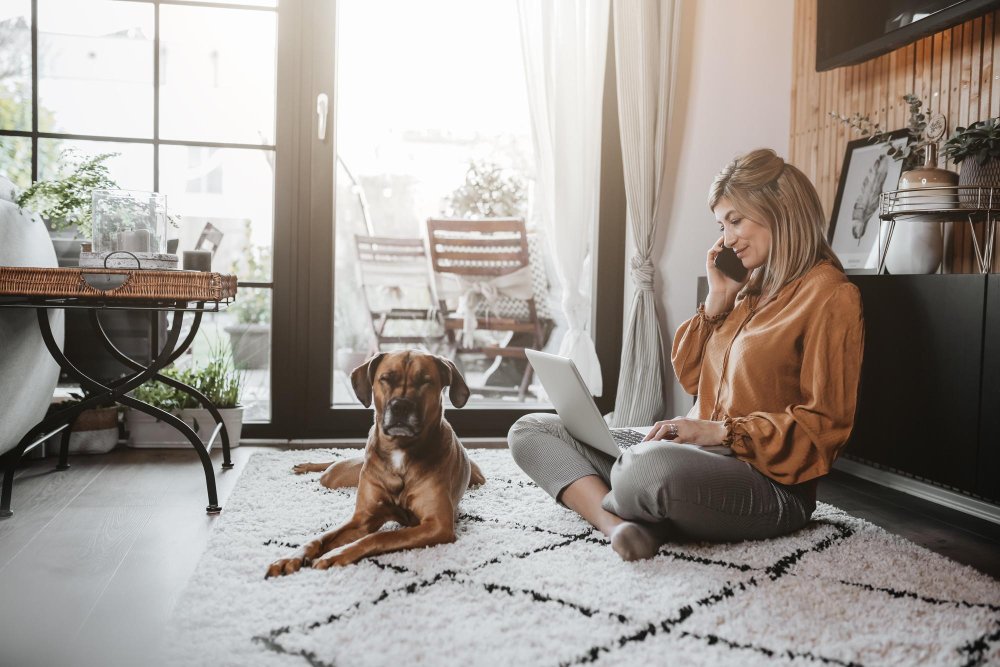Designing a Pet-Friendly Living Room: Furniture and Layout Tips
Designing a pet-friendly living room involves more than just selecting the right furniture. It’s about creating a space that caters to the needs and behaviors of pets while maintaining a stylish and welcoming atmosphere. This article provides tips on choosing pet-friendly furniture, creating a comfortable space for your pet, arranging furniture for pet-friendly living, and keeping your living room clean with pets.
Key Takeaways
- Choose pet-friendly materials for furniture, such as leather, microfiber, or synthetic fabrics.
- Consider stain-resistant options to protect furniture from pet accidents.
- Provide cozy pet beds to give your pet a comfortable space of their own.
- Include pet-friendly rugs that are easy to clean and resistant to stains.
- Designate a pet-friendly zone in your living room to keep your pet’s belongings organized.
Choosing Pet-Friendly Furniture
Materials to Look for
When picking furniture that’s good for pets, use materials like leather, microfiber, or synthetic fabrics. We all know that pets can make a mess sometimes, whether it’s a fun game or an accident. With furniture made from these materials, you can wipe away any spills or stains, and your furniture will look as good as new. Leather is an excellent choice because it’s sturdy and can resist scratches. Microfiber is soft, comfy, and can withstand stains. Synthetic fabrics, polyester or nylon, for example, are also suitable for pet-friendly furniture.
Avoiding Delicate Fabrics
When choosing furniture for your pet-friendly living room, it’s important to avoid delicate fabrics that can easily be damaged by your furry friends. Fabrics with tight weaves are less likely to trap pet hair, making them easier to clean and maintain. Leather is an excellent choice because it’s sturdy and can resist scratches. Microfiber is soft, comfy, and can withstand stains. Synthetic fabrics, such as polyester or nylon, are also suitable for pets. Nowadays, with the advent of online furniture sites, finding pet-friendly furniture is easier than ever. So, whether you have a cat that loves to scratch or a dog that likes to jump on furniture, you can easily find the perfect pet-friendly furniture online.
Consider Stain-Resistant Options
When it comes to choosing pet-friendly furniture, one important factor to consider is stain-resistant fabrics. These fabrics are specially treated to resist liquids and prevent them from seeping into the fabric fibers. So, when your furry friend accidentally knocks over a glass of red wine or decides to mark their territory on your favorite armchair, you can easily wipe away the mess without worrying about permanent stains or lingering odors. Stain-resistant fabrics are like having a personal assistant who cleans up after your pet without the hefty paycheck.
Another tip to keep in mind is to choose the right upholstery color. Opting for a darker shade or pattern can help hide pet hair or stains, making them less noticeable. Darker shades like deep blues or grays can be a great choice for pet owners.
Additionally, consider furniture with removable and washable covers. Accidents and messes are inevitable when you have pets, but with removable and washable covers, you can keep your furniture looking fresh and clean without breaking a sweat. Imagine your furry friend jumping on the couch after a long walk in the rain, leaving muddy paw prints all over your precious upholstery. Instead of panicking and reaching for the cleaning supplies, you can simply remove the covers and toss them in the washing machine for easy cleaning and maintenance.
In summary, when selecting pet-friendly furniture, prioritize stain-resistant fabrics, choose darker upholstery colors or patterns, and opt for furniture with removable and washable covers. These tips will help you create a living room that is both stylish and practical for you and your furry companion.
Creating a Comfortable Space for Your Pet
Providing Cozy Pet Beds
Integrating areas specifically for pets, like a cozy nook under a staircase or a designated spot for a sleeper sofa, can provide them with their own space. Pet-Friendly Fabrics: Choosing pet-friendly fabrics for furniture, such as a chenille or linen sofa couch, can offer both comfort and durability. These fabrics are often easier to clean and resist wear from pets. Flooring Choices: Opting for pet-friendly flooring like tile or hardwood can ease cleaning efforts. Carpets, while comfortable, may trap pet hair and odors. Dedicated Pet Spaces: Make sure they’re large enough to accommodate your pets comfortably and strategically placed in areas where they already like to hang out. This will increase the likelihood that they’ll actually use these designated spaces instead of your expensive sofa or armchair.
Including Pet-Friendly Rugs
Integrating areas specifically for pets, like a cozy nook under a staircase or a designated spot for a sleeper sofa, can provide them with their own space. Pet-Friendly Fabrics: Choosing pet-friendly fabrics for furniture, such as a chenille or linen sofa couch, can offer both comfort and durability. These fabrics are often easier to clean and resist wear from pets. Flooring Choices: Opting for pet-friendly flooring like tile or hardwood can ease cleaning efforts. Carpets, while comfortable, may trap pet hair and odors. Stylish Yet Practical Layouts Accommodating Pet Movement and Activities The layout of a pet-friendly home should consider the movement and activities of pets. Open Spaces: An open floor plan, especially in living areas, allows pets to move freely without damaging furniture. This approach works well with modern couches and mid-century designs. Furniture Placement: Strategic placement of furniture like a 3-seat or mid-century modern sofa can help direct pet traffic away from areas where they might cause damage.

Designating a Pet-Friendly Zone
When creating a pet-friendly living room, it’s important to designate a specific area for your furry friend. This designated zone provides them with a sense of security and their own space within the room. Whether it’s a cozy corner with a plush bed or a designated spot on the sofa, having a designated area helps establish boundaries and promotes a harmonious coexistence between you and your pet. It also helps prevent your pet from claiming the entire living room as their own. By creating a pet-friendly zone, you can ensure that both you and your pet can enjoy the living room together.
Incorporating pet-friendly plants
Incorporating pet-friendly plants into home decor not only enhances the aesthetic appeal of your living space but also ensures the safety and well-being of your furry companions. Lush, verdant ferns like Boston or Maidenhair add a touch of elegance and tranquility to any room, without posing a risk to curious pets. Spider plants, with their arching leaves and playful offshoots, create an engaging, dynamic environment, and are known for their air-purifying qualities. For those seeking a pop of color, African violets offer a safe, vibrant option, their delicate purple blooms bringing a cheerful energy to any space. Not only do these pet-safe plants elevate the visual appeal of your home, but they also contribute to a healthier, more harmonious environment for both you and your pets, fostering a serene coexistence with nature. If you are interested in discovering pet-friendly plants, please click here.
Arranging Furniture for Pet-Friendly Living

Creating Open Pathways
When designing your pet-friendly living room, it’s important to consider the layout and arrangement of furniture to create open pathways for your furry friends. Open pathways allow your pets to move freely throughout the space without any obstructions. This not only promotes a sense of freedom and exploration for your pets but also helps prevent accidents and injuries. Here are some tips to help you create open pathways in your living room:
-
Arrange furniture strategically: Place your furniture in a way that leaves enough space for your pets to walk and play. Avoid blocking doorways or creating narrow passages that can be difficult for your pets to navigate.
-
Use furniture with raised legs: Opt for furniture with raised legs, such as sofas and chairs, as this creates a visual openness and makes it easier for your pets to move underneath them.
-
Consider removable furniture: If you have larger pets or a particularly hectic schedule, consider using furniture that can be easily moved or rearranged. This allows you to create temporary pathways or open up space when needed.
By following these tips, you can ensure that your living room provides a comfortable and safe environment for both you and your pets.
Avoiding Furniture Blockades
When arranging your furniture in a pet-friendly living room, it’s important to consider the flow of your space. You don’t want your furry friend to feel trapped or blocked off from certain areas. Here are some tips to avoid furniture blockades:
- Create open pathways: Arrange your furniture in a way that allows your pet to move freely throughout the room. Avoid placing large pieces of furniture in narrow walkways.
- Strategic placement of scratching posts: If your pet has a tendency to scratch furniture, strategically place scratching posts near their favorite spots to redirect their behavior.
- Consider multi-use furniture: Opt for furniture that serves multiple purposes, such as a coffee table with built-in storage or a sofa with a pull-out bed. This can help maximize space and prevent furniture blockades.
Remember, creating a comfortable and accessible space for your pet is essential for their well-being and happiness.
Strategic Placement of Scratching Posts
When searching for furniture with pet-friendly design features, consider the size and placement of the built-in pet beds or scratching posts. Make sure they’re large enough to accommodate your pets comfortably and strategically placed in areas where they already like to hang out. This will increase the likelihood that they’ll actually use these designated spaces instead of your expensive sofa or armchair. Tip Invest in scratch-resistant material. If you have cats, consider furniture made from scratch-resistant materials like polyester and denim. These materials can withstand the constant scratching that our feline friends love to indulge in. So why not invest in pet-friendly furniture to keep you and your furry companions happy? Here are four reasons why scratch-resistant furniture is a must-have for cat owners: Durability, Easy to Clean, Protective Finishes, and Multi-Use Furniture.
Keeping Your Living Room Clean with Pets
Choosing Easy-to-Clean Surfaces
Ease of cleaning is crucial in a pet-friendly home. Furniture that allows for quick clean-up of pet hair and unexpected stains helps maintain a clean and healthy environment. Machine-Washable Covers: Removable and machine-washable covers are a game-changer. They allow for easy cleaning of pet hair and spills. Stain-Resistant Fabrics: Certain fabrics come treated with a stain-resistant finish, making them a popular choice for their ease of cleaning and sophisticated look. Alternatives like microfiber or tightly woven fabric can be more forgiving. Design Elements: Cushion covers and slipcovers are invaluable for pet owners. They protect the underlying material and can be easily removed for cleaning. Choosing a sectional couch with removable covers, for example, offers flexibility and ease of maintenance. Color and Pattern Selection: Darker colors or patterns can help hide pet hair and minor damage. This doesn’t mean compromising on style; there are plenty of stylish options available that are also pet-friendly.
Using Pet-Friendly Cleaning Products
Consider easy maintenance solutions, like using a solution of distilled water and mild detergent for cleaning, to keep furniture looking fresh without compromising on design. Incorporating these design considerations ensures that a home is not only aesthetically pleasing but also a comfortable and safe space for pets. The goal is to create a harmonious environment where both pets and their owners can enjoy their time together.
Establishing Regular Cleaning Routines
Consistent routines play a pivotal role in maintaining a harmonious and well-balanced home life for both family members and pets. Establishing daily schedules and rituals can provide a sense of stability, predictability, and comfort for everyone in the household. When crafting routines, consider the needs and preferences of both your family and pets, and strive to create a harmonious blend of activities that cater to everyone’s well-being.
Begin by setting regular mealtimes for both your family and pets. This not only promotes healthy eating habits but also creates a sense of structure and anticipation. Additionally, incorporating daily exercise routines for both humans and pets can contribute to physical fitness, mental stimulation, and overall well-being. Whether it’s a family walk in the evening or a play session with your pets, these shared activities or creating a cozy nook for your pets to retreat to, these moments of calm can nurture a sense of peace and contentment within your home.
Consistency is key when it comes to routines, as it fosters a sense of security and stability for all inhabitants of your home. By crafting daily schedules that cater to the needs of both your family and pets, you can create a nurturing and balanced environment that promotes well-being and togetherness. Embrace the beauty of routines as a cornerstone of a fulfilling home life for both your family and beloved pets.
Conclusion
Designing a pet-friendly living room requires a thoughtful blend of style, durability, and comfort. It’s about creating a space that not only looks beautiful but also caters to the needs and behaviors of our four-legged family members. By considering functional design elements, practical layouts, and aesthetic considerations, we can design a home that is both welcoming and accommodating to pets. From choosing pet-friendly fabrics and flooring to incorporating dedicated pet spaces and strategic furniture placement, there are numerous ways to create a harmonious environment for both pets and their owners. So, let’s embark on the journey of designing a pet-friendly living room and make our homes a comfortable and safe space for everyone in the family.
Frequently Asked Questions
What materials should I look for when choosing pet-friendly furniture?
When choosing pet-friendly furniture, look for materials like leather, microfiber, or synthetic fabrics that are durable and easy to clean.
How can I create a comfortable space for my pet-friendly living room?
You can create a comfortable space for your pet in the living room by providing cozy pet beds, including pet-friendly rugs, and designating a pet-friendly zone.
How should I arrange the furniture in a pet-friendly living room?
In a pet-friendly living room, it’s important to create open pathways for pets to move freely, avoid furniture blockades, and strategically place scratching posts.
How can I keep my living room clean with pets?
To keep your living room clean with pets, choose easy-to-clean surfaces, use pet-friendly cleaning products, and establish regular cleaning routines.
What are some pet-friendly fabric options for furniture?
Some pet-friendly fabric options for furniture include chenille, linen, and microfiber, as they are durable and resistant to wear from pets.
What flooring choices are best for a pet-friendly living room?
For a pet-friendly living room, it’s best to opt for pet-friendly flooring like tile or hardwood, as they are easier to clean and don’t trap pet hair and odors.







